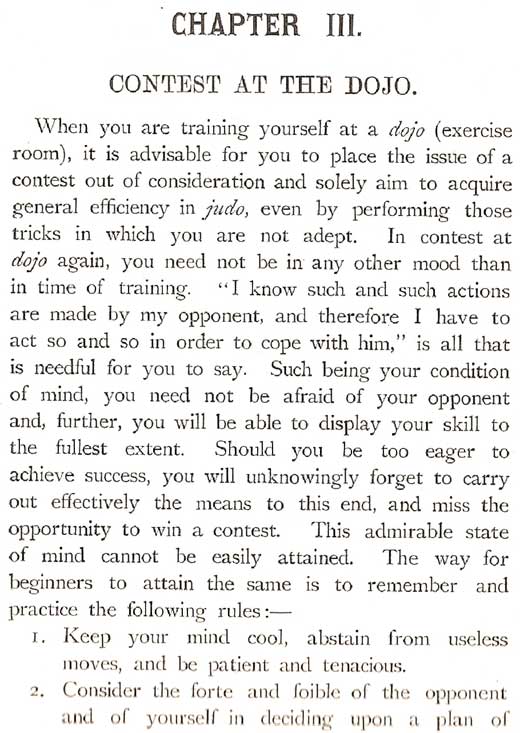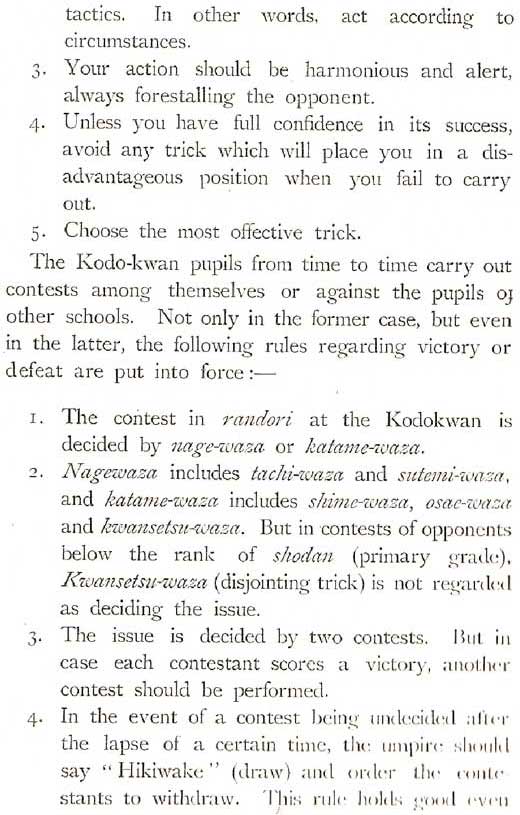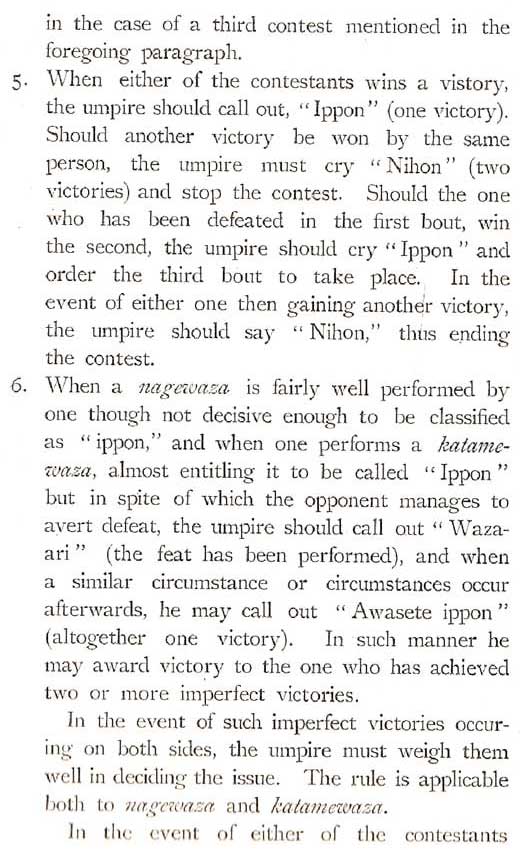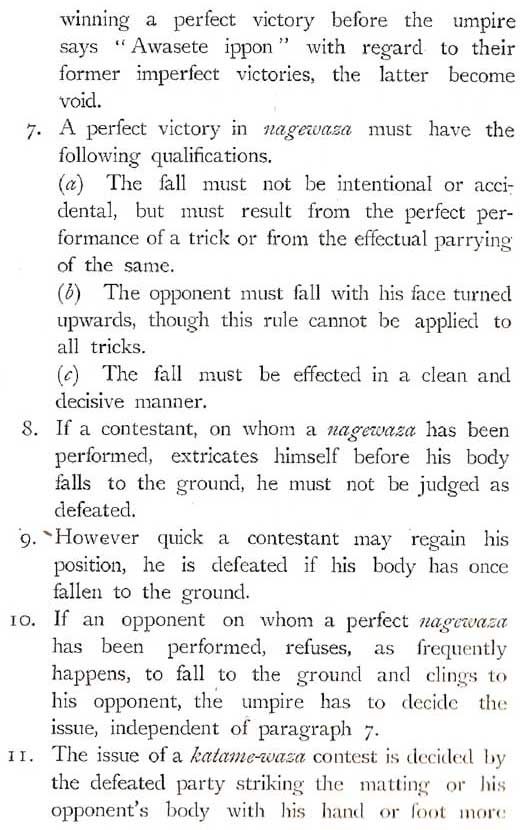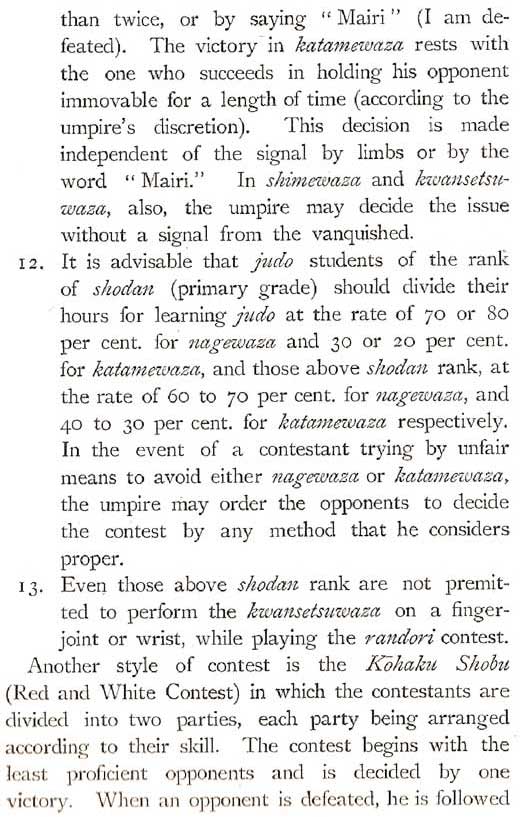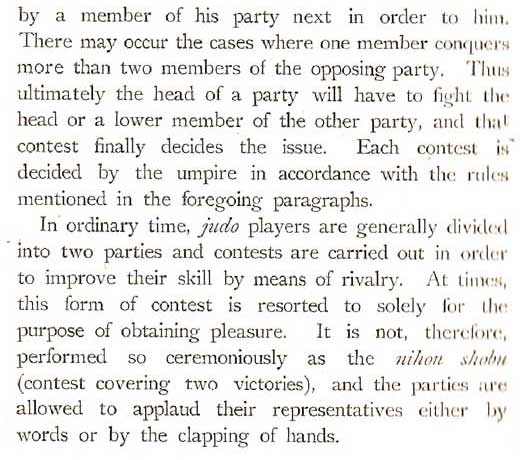Judo: Japanese Physical Cultureby Sumitomo Arima (1908)
For more information about the early rules of Judo competition, please see this excerpt from The Complete Kano Jiu-Jitsu (Judo) by H. Irving Hancock and Katsukuma Higashi (published in 1905) which is another account of actual contests of the time which were more typical of jujutsu matches. Other early Judo Books Online are available for download. |

